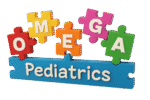Lactation Services
Breastfeeding support for expecting families and newborn infants
We are trained to help families on their breastfeeding journey
Our providers have received extra training in the support of families on their breastfeeding journey. Breastfeeding protects against a variety of disease and conditions in infants including diarrhea, respiratory infections, type 1 and 2 diabetes, lymphoma, leukemia, and Hodgkin’s disease, childhood overweight, obesity and many more.
There are also maternal health benefits to breastfeeding such as decreased postpartum and menstrual bleeding, a quicker return to pre-pregnancy weight, and a decreased risk of breast and ovarian cancers.
Our Lactation Services include:
Guidelines for breastfeeding with substance use and substance use disorder

Breastfeeding Benefits
Breastfeeding has tremendous health benefits and forges a very strong bond between the mother and the child early on.
Essential nutrients for the baby
Breast milk provides the perfect amount of fatty acids, lactose, water, and amino acids for your baby’s growth, digestion, and brain development. It also has antibodies that protect infants from bacteria and viruses, helping to fight off infection and diseases.
Positive effects for the mother
Breastfeeding is great for the baby, but it is also beneficial to the mother in many ways. For one thing, breastfeeding releases the hormone oxytocin, which helps shrink the uterus to its pre-pregnancy size, decrease blood pressure, and relieve stress. Women who breastfeed also have a lower risk of breast, ovarian, and uterine cancers, as well as osteoporosis.
Convenient and free
Wherever you and your baby happen to be, breast milk is always available on demand. There’s no formula to buy, no bottles to wash, no need to warm milk, and it costs virtually nothing. In addition, breast milk is always the right temperature, and it makes nighttime feedings a breeze.
Breastfeeding 101
If you decide to breastfeed, these tips and suggestions will help make this bonding experience easier on you and your baby.
Getting started with breastfeeding
It’s important to find a comfortable position for you and your baby before you start feeding. If you’re using the laid-back position, let your baby attach himself to your breast when he is ready. If you are using a different position, you will need control the attachment more than your baby. Once your baby is correctly latched, milk should flow naturally.
Breastfeeding positions
The key to a smooth feeding session is to ensure your baby is positioned in a way that allows him to get all the milk he can. There are several positions, one of which is bound to be suitable for your child:
Common breastfeeding problems
There are several problems associated with breastfeeding, including wrong latching position, pain, inverted nipples, leakage, and yeast infection. Make sure you seek help from your doctor or lactation consultant so you and your baby can begin a comfortable feeding routine.
-
Screen Time is Not Playtime: 4 Reasons Why Real Play Matters for Kids’ Health
Screens are everywhere, and for many families, they have become a natural part of daily life. From TVs to tablets, video games to smartphones, children have more access to digital devices than ever before. It’s easy to understand why—after all, they are entertaining, convenient, and often give parents a much-needed break. But as comforting as…
-
What is the Right Age for Kids to Start Using a Tablet and How to Set Parental Controls?
The average age for children to start using a tablet varies depending on factors such as the child’s cognitive development, maturity level, and parental discretion. Recommendations According to the American Academy of Pediatrics (AAP), it is recommended that: 18 months below should not use a tablet except for video chatting. 18 months to 2 years…
-
What Percentage of Children Suffer from Severe Allergies and How Are They Managed?
The prevalence of severe allergies in children can vary depending on the specific allergen and geographic location. However, it is estimated that around 8% of children have food allergies, and approximately 8-10% of children have respiratory allergies such as allergic rhinitis or asthma. Managing severe allergies in children involves a combination of avoidance strategies, medication,…
-
What is the Average Age for Potty Training Children & What are the Benefits?
The average age for potty training children varies, but most children are ready between 18 months and 3 years of age. Some children may be ready earlier, while others may take longer to be fully trained. It’s important to remember that each child develops at their own pace, and there is no “right” age for…
-
What is the average age for kids to start walking, and major milestones of physical development?
The age at which children begin to walk can vary, but the average age for children to start walking is typically around 12 months. However, it’s important to note that children develop at their own pace, and there is a wide range of what is considered normal in terms of reaching physical and developmental milestones.…
-
What is Bullying and How Does it Affect Children in the U.S.?
Bullying is a type of aggressive behavior that is deliberate, recurrent, and involves a disparity in strength or power between the victim and the perpetrator. Bullying can happen offline or online and can take many different forms, including physical, verbal, and social/emotional bullying. How big is the problem? In the US, 20% of students between…
Video Review
Ashlie Thompson
Dr. Nwaneri and his team are absolutely amazing! They’ve been so welcoming and caring with our son. Maria has also been a fantastic lactation consultant. She helped me so much with increasing my supply, and thanks to her my son is nearly exclusively breastfed!
